This article has links to products and services we love, which we may make commission from.
You’ve picked the right country! Peru boasts of every type of terrain possible. 2 weeks in this South American country is ample time to soak up the Peruvian culture without feeling rushed.
Here is our extensive Peru itinerary, which can be reduced or extended depending on your timescale. It details the top Peru tourist attractions, how to get around, what to eat and drink, where to stay and how to stretch your budget. Although I have recommended a number of days for each location, you can pick and choose which stops meet your touring Peru needs best.
You may also find our list of Peru guides useful.
2 Weeks in Peru Itinerary – The Route
1. Lima
Most travellers fly into the capital, Lima.
If you have one night, stay in Miraflores. It’s very touristy but has everything on your doorstep – food markets, North America’s embassies – McDonald’s, etc., clothes shops, bars, and an amazing beach view.
The Larcomar is a complex of more upmarket shops and restaurants as well as a cinema and bowling alley.
The sunset is not to be missed from this spot.
If you have more than one night in Lima, stay in the trendy area of Barranco.
Cute coloured buildings, art, and microbreweries! A nice balance of attractions for your Peru itinerary.
- Recommended nights: 2-3 nights maximum in Lima is required
- Taxi Green or Uber can be booked from the airport to Miraflores
- Lima to Paracas: Approximately 3 – 4 hours
- Lima to Màncora (see below): 17 – 19 hours (1-hour 45-minute flight approximately)
Read next: things to do in Lima’s districts.
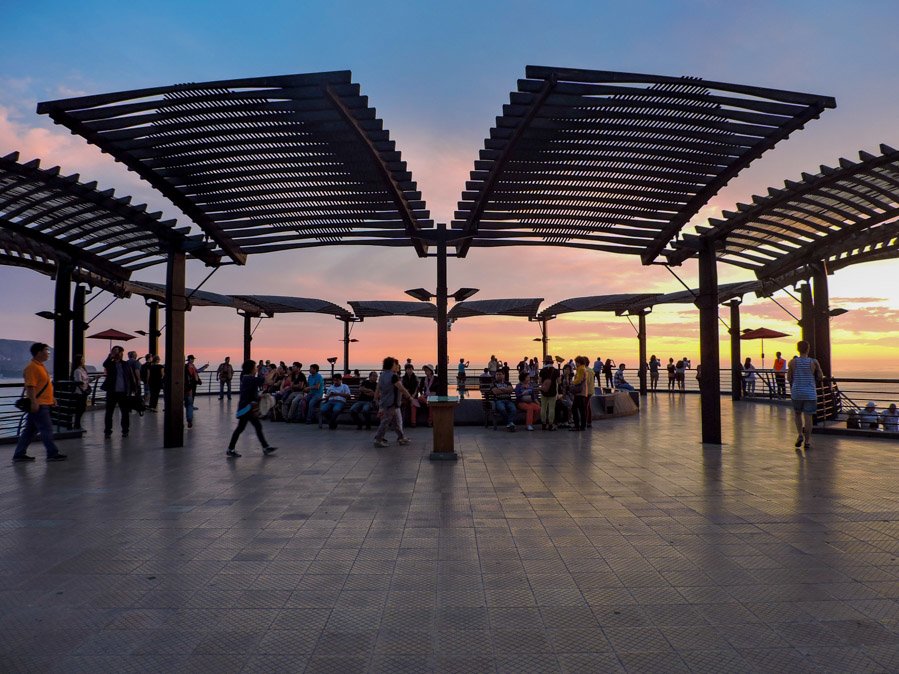
Accommodation in Lima
Hotels in Lima
Hotels in Miraflores are surprisingly cheap. Apart Hotel Petit Palace Suites is popular with holidaymakers who like the clean, comfortable rooms, fruit and bread continental breakfast and professional staff.
Free bikes are available; take a ride along the Malecón!
The Luxury Inkari Hotel is spectacular! The heated swimming pool and gym with sauna get a thumbs up from visitors who also enjoy the restaurant and cocktails. An airport shuttle is available.
For a rooftop pool in Lima, check out the 5-star Hilton Lima Miraflores. The super modern rooms are kitted out in luxury linen.
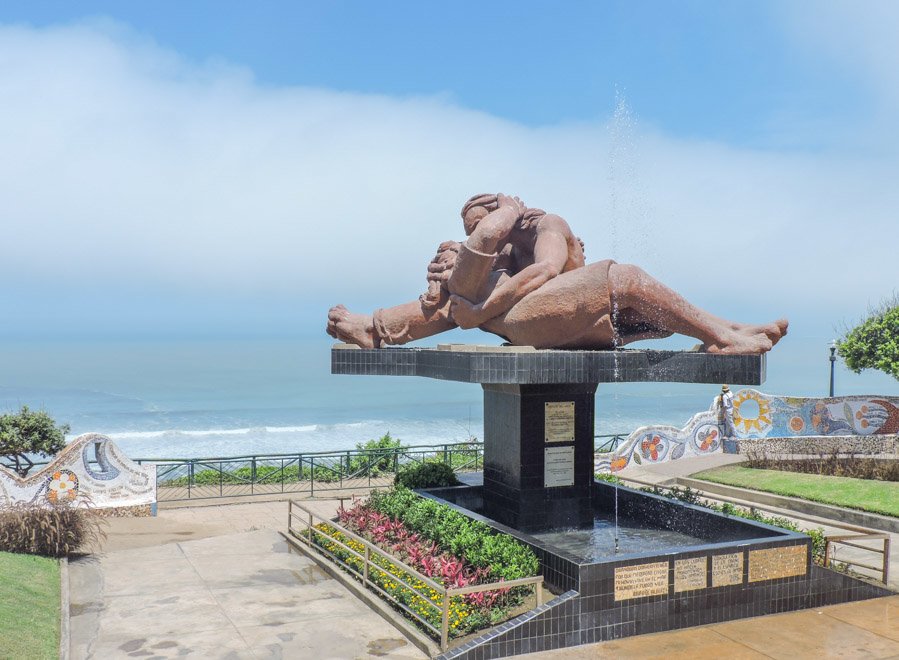
Lima Hostels
Hostels in Lima are your cheapest option, and they are pretty economical, starting at just over £6/$8 per night for a dorm bed.
Most offer a bread and jam breakfast and social events on rooftops, etc.
Check reviews and the best prices for Lima hostels.
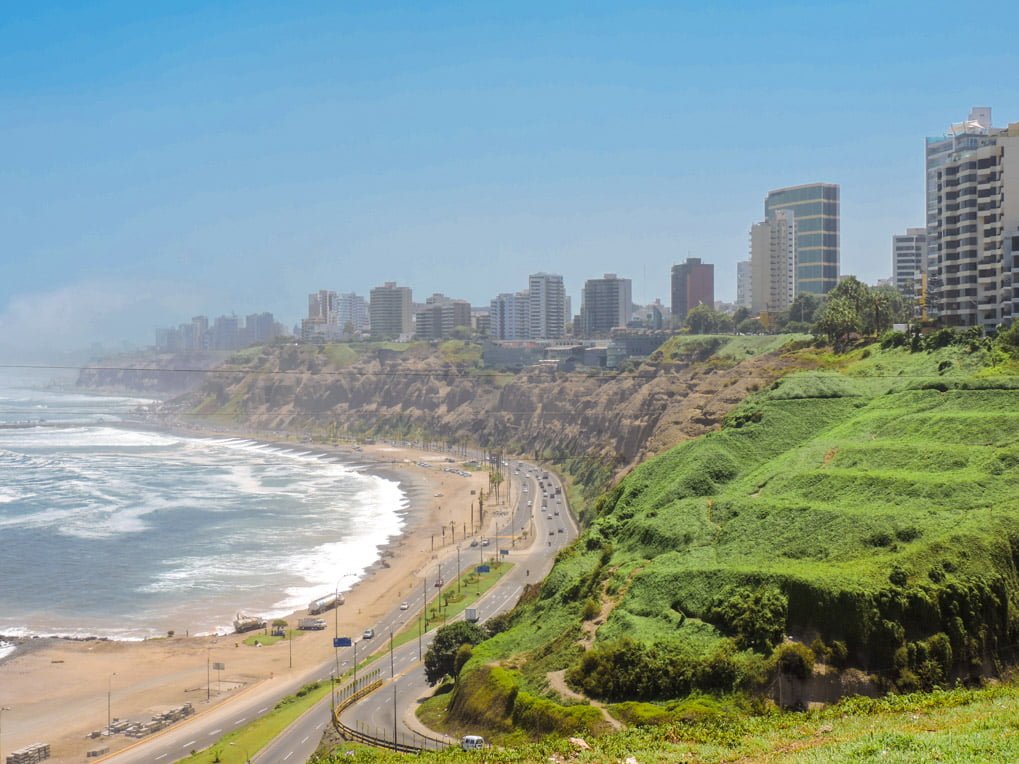
2. Paracas and Isla Ballestas
Paracas is a small beach town approximately four hours from Lima.
It is the gateway to Isla Ballestas, ‘the poor man’s Galapagos Island.’
By speedboat (not fancy a cabin boat; take layers to wrap up), you can see Humboldt penguins, seals, sea lions, and birds.
Check out boat tour availability.
Isla Ballestas has its very own Nazca Lines called Candelabra Geoglyph, which is 150m high and 50m wide, a must-see highlight on your Peru itinerary.
It was hot during the boat tour, so make sure you pack a hat, sunglasses, and factor 50.
I like La Roche-Posay factor 60 cream when splurging.
- Recommended nights: 1 night (unless you want some beach and not just boat time)
- Paracas to Nazca Lines: approximately 1 – 2 hours
Read next: Things to do in Paracas.

Accommodation in Paracas
Paracas Hotels
Hotel Hilton Paracas is the most popular option. This modern hotel is located next to the Paracas National Park.
Many of the rooms have balconies with either a swimming pool or a sea view. There is a restaurant and breakfast for an extra fee.
The Inca Spa offers massages, so if you are after a relaxing break, there’s really no reason to leave the DoubleTree by Hilton Resort.
A cheaper option is the new Hotel Riviera Inka Paracas. One of the nicest features is the balcony and the proximity to the beach and El Chaco Boardwalk.
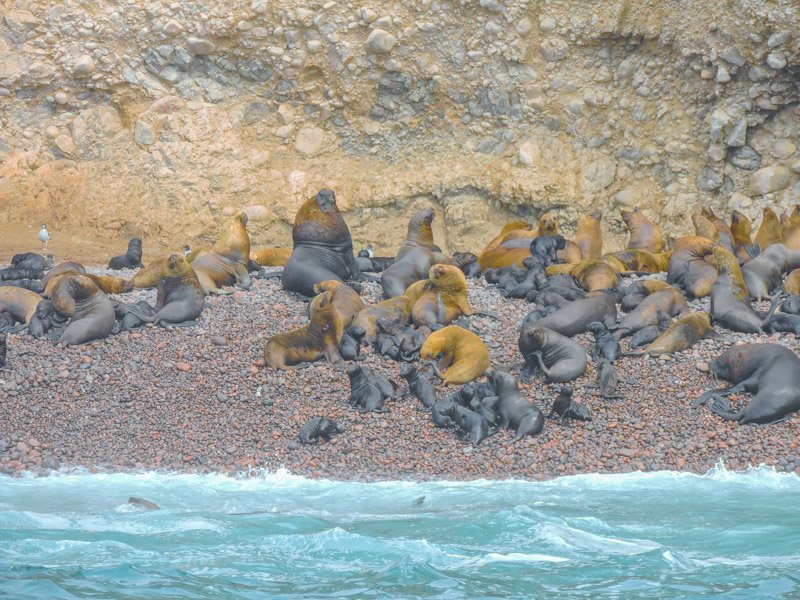
Hostels in Paracas
Paracas is a small town, so there is not much choice regarding accommodation, with fewer than ten hostels available in the area.
Party backpackers tend to flock to the well-known chain Kokopelli Backpackers, which has a pool and is directly on the beach (we walked right through it to get to the playa).
We stayed in their capsule-style dorms in Cusco and found it private but still sociable, a great concept. Breakfast is also included.
For budget backpackers, there are dorms available for under £7/$9.
See reviews for the full range of hostels in Paracas – read the overview.

3. Nazca Lines
Man-made or aliens?!
The burning question that lies with Peru’s Nazca Lines.
Budget travellers can see the Lines from the viewing platform for a couple of Peruvian soles.
For those who truly believe, some companies offer helicopter rides over the twelve Nazca Lines.
Check availability before you head to Peru – these helicopter guides are English-speaking, and the ride is 30 minutes for around £160/$200.
- Recommended nights: In & out unless taking a ‘copter ride, you’ll need to stay overnight
- Nazca Lines to Ica (Huacachina): 2 – 3 hours
- You may want to skip the overnight if you only have two weeks in Peru unless it’s a hot one for you
Accommodation in Nazca
If you do decide to take the flight, you’ll need somewhere to stay, and there are a few options with 9/10 reviews from fellow travellers, so you are in safe hands.
The small Nanasqa Hostel is close to a supermarket, offers a pick-up from the bus station if the car is available, and, probably most importantly, boasts a selection of local beers.
Dorm rooms are economical; check out the best rates and availability.
Four-bed dorms and private rooms are also available at the Nasca Lodge.
Check out the full range of hostels in Nazca to see which fits your budget – see the overview here.
4. Huacachina
Have you ever partied in an oasis? Huacachina is one of the best places to visit in Peru!
A small (party?) town surrounded by large sand dunes, itching for you to board (or ski!) down.
There are many companies looking to take you to the dunes, but for the authentic experience, choose one which offers appropriate gear (authentic boards and boots) and the opportunity to ski.
Mode of transport?
Buggies! Huacachina is a fun place to spend a weekend if you want to relax by the pool (Banana’s Adventures Hostel) or have some drinks.
Warning: Huacachina can cause serious hangovers; we now swear by these hydration tablets US / UK. Stock up! In fact, it was a British doctor on holiday in Cuba who recommended them.
The next town is Ica; there you will find ATMs, supermarkets, restaurants, and shops. It’s a short tuk-tuk ride away, approximately 15 minutes.
- Recommended nights: Max. 3 nights. 1 or 2 nights if only interested in sandboarding Peru
- Huacachina (Ica) – Arequipa: approximately 12 hours (overnight available)
- Why didn’t we sandboard in Huacachina… Huacachina and Sandboarding and Sand-Skiing in Peru

Accommodation in Huacachina
Hotels in Huacachina
An unusual hotel in Huacachina is Desert Nights Ecocamp.
The glampsite is set up on the dunes looking down on the oasis. There’s definitely no sleeping on the floor – tents have double beds. A swimming pool is also available, as well as a bar and cafe/restaurant.
A more basic option is the Hotel El Huacachinero, which has private bathrooms, a shared common area, swimming pool. This hotel is only a three-minute walk to the restaurants and bars.
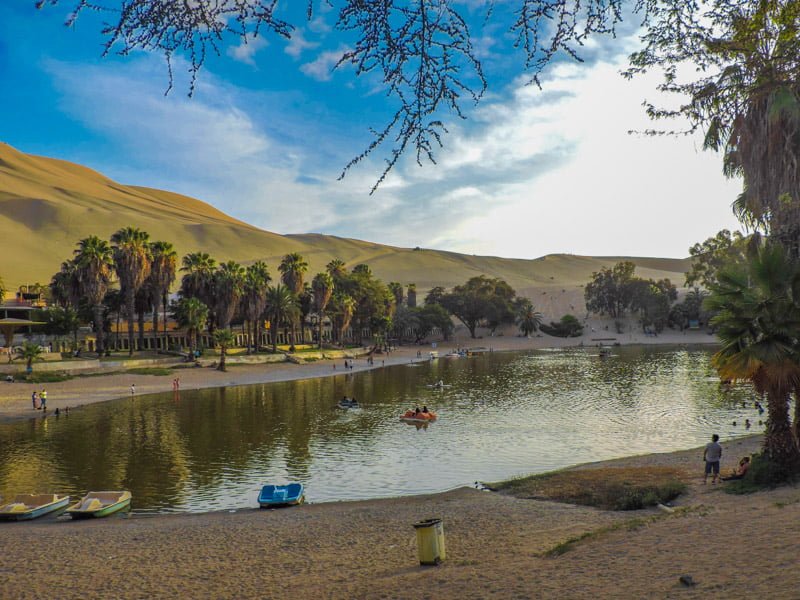
Huacachina Hostels
I honestly have such fond memories of our stay at Banana’s Adventure that we stayed three nights instead of one.
There’s such a nice vibe around the pool, they put on BBQ nights, the poolside bar has smoothies and our Peru Hop (see below for more information) tour guide (who was not staying at Bananas) said that they do the best food in the town. The WiFi wasn’t great (non-existent), but that meant I could take a weekend off blogging and actually chill out (and party!)
Like all hostels in Peru, Bananas has dorms and privates, we had no issues sleeping regardless of the rooms being around the pool area, the bar closes and everyone heads around to Huacaf*ckingchinas, including the bar staff.
Check out the best option for your trip here.
The rest of our Peru Hop companions stayed at the hostel with the Friday/Saturday nightclub attached, Casa De Arena.
Personally, I avoid hostels, which are party places; I like to visit them, drink and dance and then get some rest elsewhere; the decision is yours.
Huacachina hostels have seen a bit of competition over the last few years and there is certainly more choice, check out the other options at the Huacachina overview.
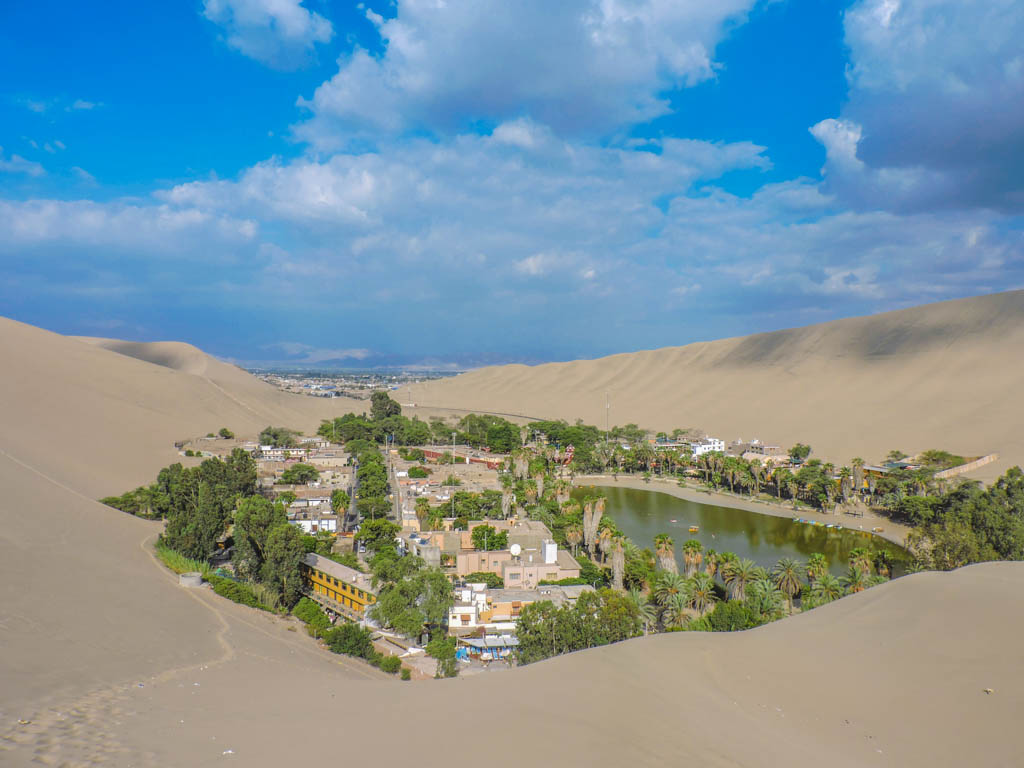
5. Arequipa
Arequipa (Are-eh-keep-ah), The White City and gateway to the Colca Canyon, is a city like no other.
Peru’s second most populated city is surrounded by three dormant volcanoes, El Misti, Chachani, and Pichu Pichu.
The ‘free’ walking tour, run by students (pay by tip, which is typical in South American cities), is extensive and recommended. Grab a jugo (juice) from San Camilo Market (The Witches Market), then get a good night’s sleep for your early rise to the Colca Canyon.
- Recommended nights: 4 nights if hiking the Colca Canyon (1 night before and 1 after). 2 nights if not
- Arequipa – Colca Canyon: Approximately 3 hours
Read next: Things to do in Arequipa.

Accommodation in Arequipa
Hotels in Arequipa
There are over 150 hotels in Arequipa.
La Hosteria is an elegant hotel located in a renovated Colonial house only five minutes from the historic centre. Continental breakfast is offered daily, and rooms have TVs.
Katari Hotel is located in the prime spot of Plaza de Armas, and the panoramic views from its rooftop are incredible. Rooms are elegant, and breakfast is included in the price.
Hostels in Arequipa
We stayed at the chain hostel, the Flying Dog. It’s peaceful, breakfast is included, and you can book your Colca Canyon Tour guide through them.
It is on the quiet side, so if you are looking for a party hostel, I’d veer towards Wild Rover, which has a bar and swimming pool. Breakfast is also included.
Arequipa is a big city; there are over 50 hostels to choose from so do check out which suits your needs and cash flow here.

6. Colca Canyon
You are researching a trip to Peru, so it is highly likely that you have either secured your place on the Inca Trail to Machu Picchu or you are deciding between one of the alternative treks to the seventh modern wonder of the world.
Stop right there! Consider a two or three-day hike down into the world’s second-deepest canyon (3,400m), a sound sleep in the canyon, and then a steep climb out!
The Colca Canyon trek is often overlooked and shouldn’t be.
Watch condors swoop overheard, sip soup in a local’s home, and feel self-satisfaction as you make it to the top!
Hiking is great for keeping fit while travelling; add to your Peru trip itinerary to combat the backpacker’s belly.
- Recommend nights: 1 or 2 nights, depending on the trek
- Arequipa to Cusco: Approximately 10 hours (overnight bus available)
- Which trek did I prefer, Colca Canyon or Lares Trek to Machu Picchu? Find out here: Colca Canyon Essential Guide and Colca Canyon Packing Guide
- Although this was one of my highlights, many visitors with only one week in Peru prioritise Machu Picchu hikes
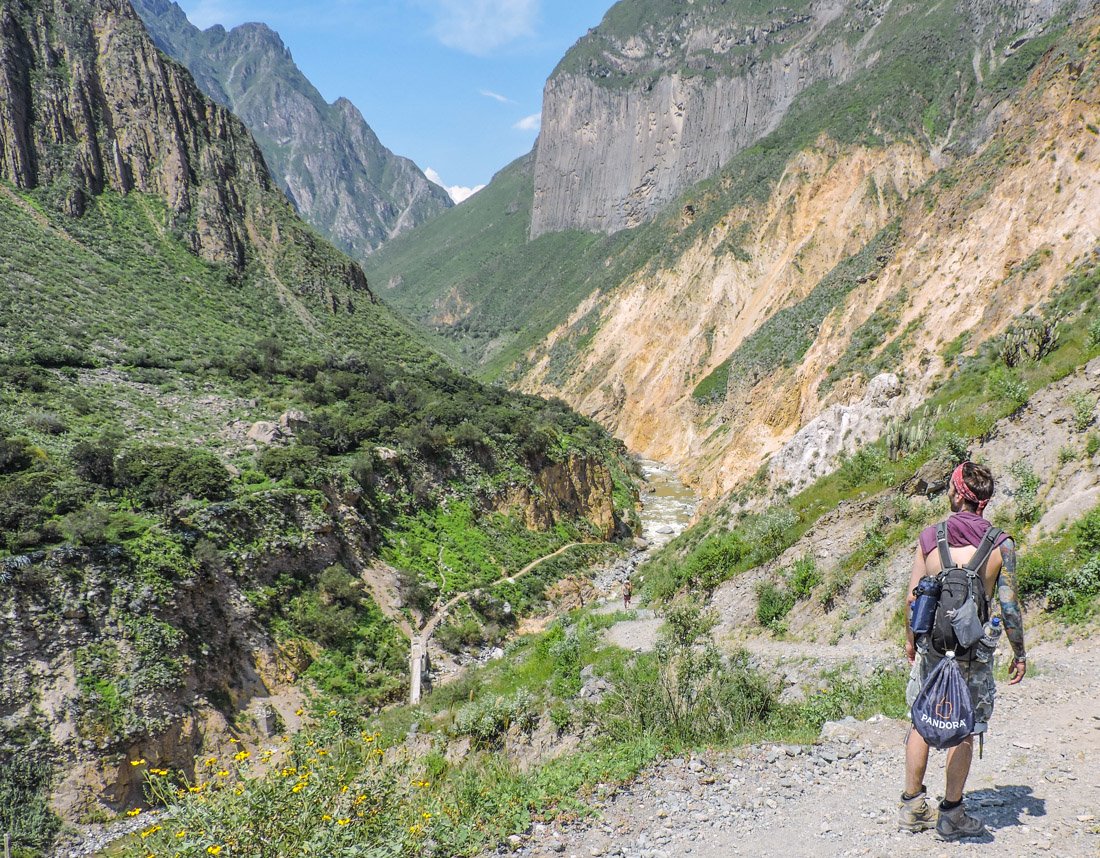
7. Cusco
Another overnighter to the cobbled streets of Cusco.
Many travellers get sucked in by Cusco’s beauty and simplicity.
Everyone who is backpacking Peru ends up in Cusco at some point, at the start of their Peru itinerary after leaving Bolivia or near the end if they are starting in Lima.
It rained every day for one week in Cusco!
It also rained daily during our trek to Machu Picchu, so think about taking a waterproof jacket with you.
I like my Marmot PreCip US / UK as it is light and folds into its own pocket, small enough to pop into my bag after the downpour.
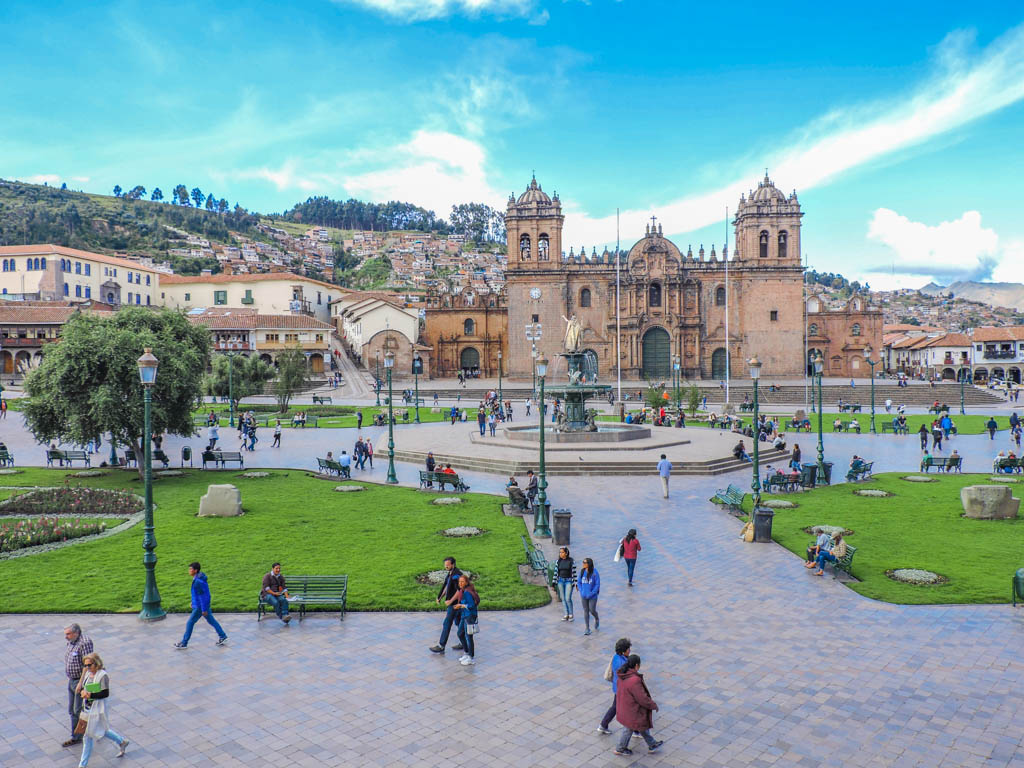
This is where you will begin the trek to Machu Picchu, such as the Inca, Salkatanky, Lares or Jungle Trek.
It is vital that you spend some time acclimatising before you begin your trek, or you run the risk of suffering from altitude sickness.
It is also advised that you select a travel insurer which allows you to climb to the heights stipulated in your trek guidelines.
For example, the Lares Trek reaches highs of 4650m/15255ft above sea level.
We shopped with True Traveller because of their coverage of these high altitudes, mas importante!
See if their rates work for you here.
Read next: 14 ways to Machu Picchu.

Is hiking not your thing? The train to Machu Picchu leaves and returns to Cusco.
Stop by the archaeological site in Ollantaytambo if you have time!
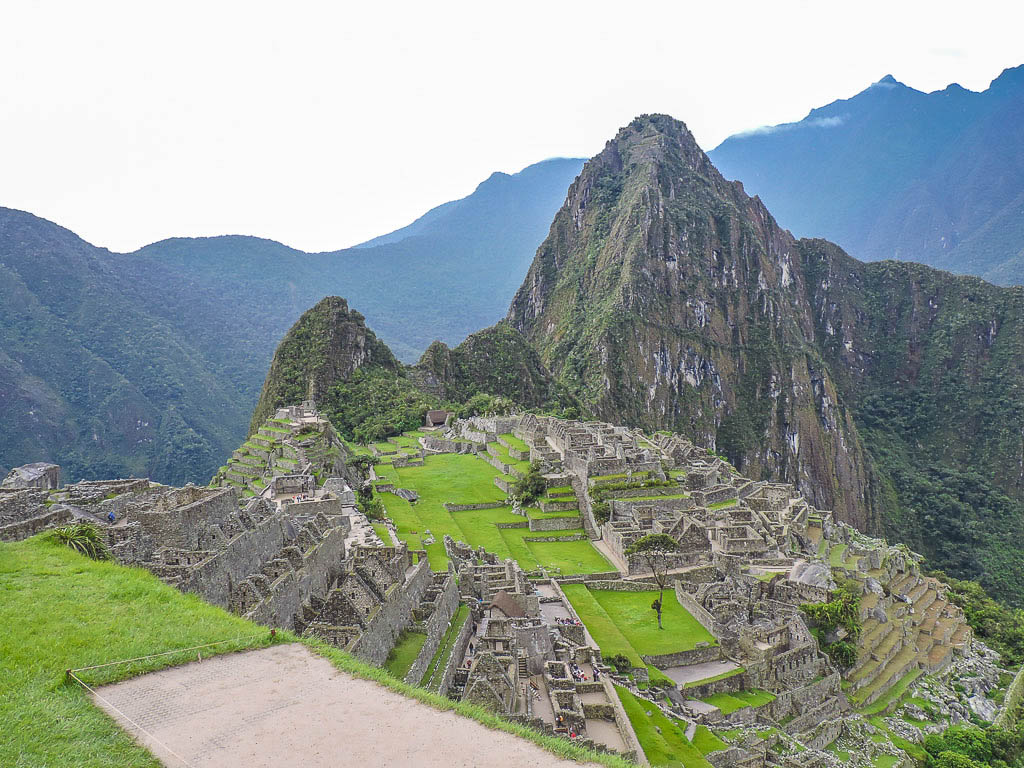
It is easy to spend a fortnight in Cusco if you want to attend Spanish school and a homestay to practice what you are taught.
For space geeks, Cusco has its own family-run planetarium!
- Recommended nights: With trek – 7 days + / without trek 3 days +
- Rainbow Mountain is another beautiful hike that we missed out on
- Check out this 3-hour hike for more details
- Check out how we spent two weeks in Cusco… Cusco restaurants to eat in / Hostels in Cusco / Lares Trek to Machu Picchu / Machu Picchu Trek Packing Guide / Cusco Planetarium
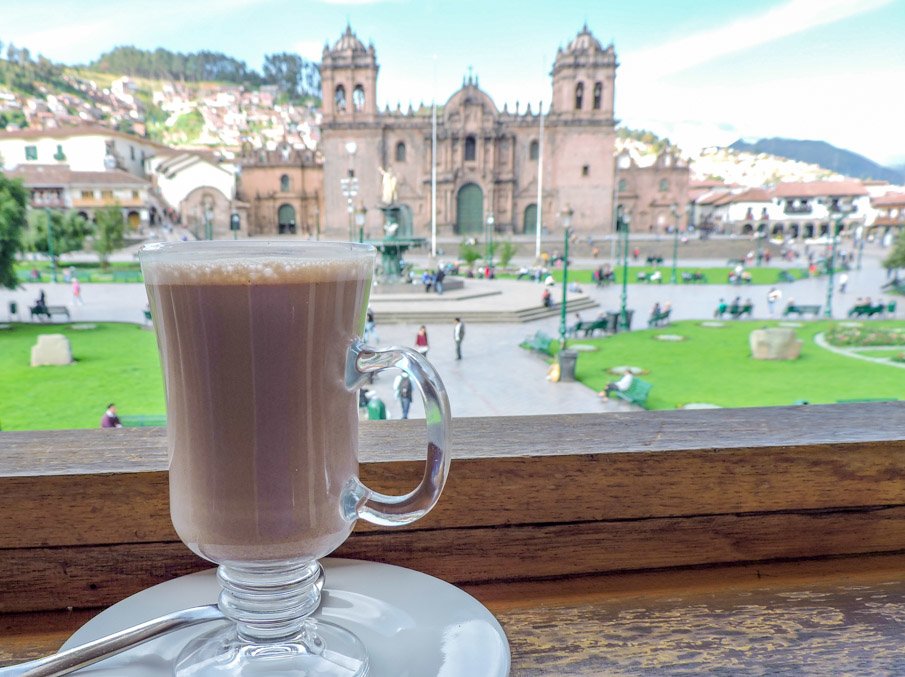
Accommodation in Cusco
Hotels in Cusco
Cusco has some of the loveliest hotels in Peru; why not stay in a former monastery from 1592?
Belmond Hotel Monasterio is a luxury hotel in Cusco, close to the action but set in serene gardens.
Rooms are fully equipped, and there are on-site dining options.
Cusco hostels
We played Goldilocks in Cusco over the two weeks we spent in Peru’s cutest city.
We tested the beds of three different hostels and dined and partied in a few more. Initially, we stayed with Kokopelli Hostels, their private capsule style dorms are really neat, you just pull a curtain over for privacy.
The hostel has a bar which serves food and puts on social events.
Free tea is available, and coca leaves are in abundance.
We left our luggage with these guys when we hiked to Machu Picchu. Check the variety of rooms and rates here.
After Machu Picchu, we tried the ‘other side’ of Cusco, San Blas.
This is the more bohemian side of the city.
Our first hostel was Casa de la Grinda, which is an option for those in Peru to try some of its more ‘natural remedies’, but we didn’t.
We partied at Loki Hostel, which is another popular choice for backpackers throughout Peru.
There are over 100 hostels in Cusco! Check out more here.

8. Puno
Puno is a small town in Peru with a port where boats take travellers to the Floating Islands of Uros during this half-day trip.
The islands are made from reed (or totora) and are inhabited by the Uros people on Lake Titicaca.
If you plan to test your Spanish or want to spend the night with a local Peruvian family, you can add this to your Peru travel itinerary by visiting Taquile Island.
Many of the women on the island only speak Quechua, but some of the men and children can converse in Spanish.
There are no cars on Taquile Island; life is simple and traditional. Ask about the environmentally friendly Chukjo!
The tour can only be booked through Inka Rest hostel; we stayed there for two nights in a private room, breakfast was extensive, and the staff were friendly!
This option on a Peru trip would really only be feasible for those spending 3 weeks in Peru.
Or, try a homestay on Amantaní Island.
- Recommended nights: With homestay: 3 nights (1 night on the island) / without homestay: 1 night
- Cusco to Puno: Approximately 8 hours
- 2-week Peru itinerary would probably remove a stay on Taquile Island, especially if you can’t speak Spanish
Read next: Puno and Taquile Island.

9. The Jungle in Peru
Over half of Peru is a jungle! This country really has it all. Peru shares The Amazon with Colombia, Ecuador, and Brazil.
There are many indigenous tribes still living in the Peruvian rainforest, and a variety of animals call this region home, too.
The city of Cusco is the best entry point for travellers looking to spend time in the jungle, and there are many companies that sell trips.
Please do some research on the ethics of companies; there are stories of mistreatment of animals by some.
If there is a guide holding a snake in an advertisement photo, give that trip a wide berth!
There are lots of options depending on budget and wants.
Puerto Maldonado is accessed by air and road, which is the base for Madre de Dios (Reserva Nacional Tambopata and the Parque Nacional Bahuaja-Sonene) and is deemed the best place to go to visit wildlife by Rough Guide.
Cheaper options may include taking a bus from Cusco via Ollantaytambo to Quillabamba, where lots of travellers go to do white water rafting on the Río Urubamba.
There are options from Lima, too.
According to Go2Peru, Iquitos is the world’s largest city, which cannot be reached by road! Iquitos can be reached by plane, LAN, Peruvian Airlines, and Star Peru fly daily.
There are one-day or multi-day trips to Amazon to suit every budget, and they can be booked before you reach Iquitos while you are there.
Naturally, there are lots of scams, so choose your company wisely. It is cheaper to go to the rainforest via Bolivia.
You will 100% need some form of mosquito repellent.
We initially travelled with a DEET-heavy repellent like OFF but moved on to a DEET-free product called Avon So Soft US / UK after nothing was working for us, and we had the fear about putting DEET on our skin after a year of applying it.
- Recommended nights stay: Depends on excursions --> unless priority Peru highlights, I’d skip this on a 14-day Peru itinerary
- Cusco to Puerto Maldonado: Approximately 1-hour flight
- Cusco to Quillabamba: Approximately3.5-hour bus ride
- Lima to Iquitos: Approximately 2-hour flight
10. Huaraz Hikes
Huaraz is a small town known as the hotbed for Peruvian hikes.
This high-altitude town (3000m asl) is a base for many backpackers who are planning one day and multi-day treks around Peru’s Andes Mountains Range.
The best time to visit is typically June, when there is little rainfall or snow.
Popular hikes include the 1-day trek to Laguna 69/ Lake 69 (that Canadian blue!), one day to Paron Lake, 3-4 4-day Santa Cruz hike (best views of the peaks of the Cordillera Blanca) or the 12-day Cordillera Huayhuash circuit.
It is advised that you do two one-day hikes (or more) to help acclimatise before attempting the multi-day Peru treks. Highs can reach 5000m asl.
I really wish we had added this to our Peru backpacking itinerary.
Trekking Peru at high altitude can get uncomfortable, make sure you acclimatise well.
- Recommended night stay: this really depends on what treks you are doing
- Lima to Huaraz – 8 hours by bus (Cruz del Sur, Movil Tours and Oltursa)
*If Huaraz is on your Peru itinerary, I would suggest visiting after Lima, as it is north of the capital. I am disappointed that we missed this out. But do check out Jon is Traveling’s experience of his trek to Laguna 60.
Huaraz Accommodation
There are quite a few options for hostels in Huaraz.
You definitely want to get a good night’s sleep before the hike, so be sure to check the reviews before you book.
La Casa de Zarela is a fair trade hostel only 10 minutes walk from the bus station. There are a variety of rooms and kitchen facilities.

Laguna 69 I Jon Is Travelling
11. Màncora – Backpacking Peru Itinerary for Surfers
North of Lima, you’ll find the Piura Region and a coast of beaches where travellers go to party.
It is not a bucket list option for many travellers who have previously spent a month on the Colombian coast, but it is an option for those looking to chill out in what some critics say is not the cleanest of beaches, surf (South Beach), or dive (Vichayito Beach).
*If Màncora is on your itinerary, I would suggest you visit there before moving further south. I’m not disappointed we missed this; we never actually met anyone who had Màncora on their Peruvian itinerary.
- Recommended night stay: Depends on how much partying/beach time you’d like
- Lima to Màncora: 17 – 19 hours (1-hour 45-minute flight)
Màncora Accommodation
There is a mix of chill and party in the Màncora hostel.
Loki makes another appearance (you’ll see the popular party hostels at most stops in Peru) with Loki del Mar, not only is it close the surf breaking point but it also has its own swimming pool.
More laidback options include ocean-view bungalows at Misfit Hostel.
Vegetarians may want to swing by Marcilia Beach Bungalows (accommodation available as well as a cafe).
Our Three Week Peru Itinerary
Craig and I were spoiled for time, so we spent one month in Peru in March/April, taking one week out to attend a Spanish school in Cusco.
We flew into Lima from Austin; we are from Scotland but started our long-term travel itinerary from New Orleans, then Austin for the music festival South by Southwest.
After three nights in Lima, we took the Peru Hop bus and followed this Peru travel itinerary.
- Paracas/Isla Ballestas (nature/one night)
- Huacachina (sandboarding/three nights) with a trip to the bank in Ica
- Arequipa and Colca Canyon (stunning hike/5 nights)
- Cusco (Machu Picchu two weeks including one week at school)
- Puno and Taquile Island (three nights), then Bolivia (two and a half weeks – check our guide)
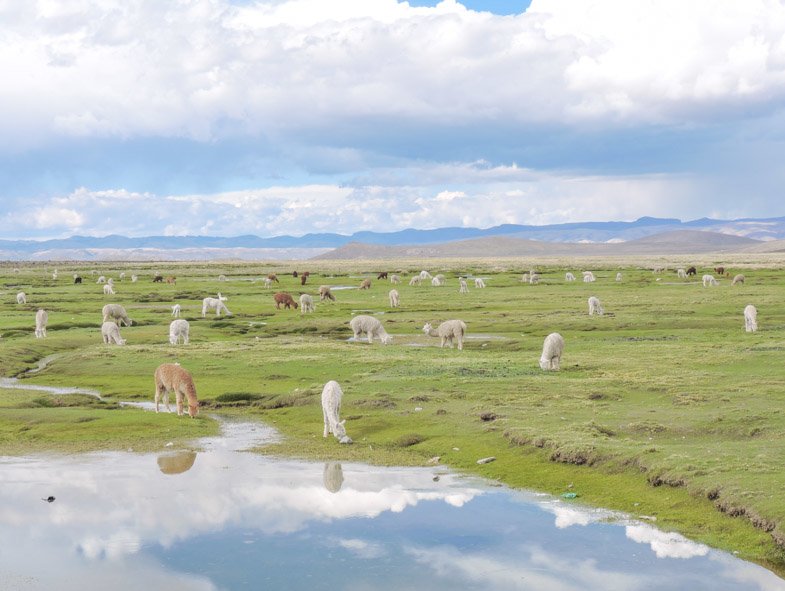
The Best Time to Visit Peru
Peru’s weather is best measured by the ‘dry’ and ‘wet’ season as opposed to summer and winter.
May to October is essentially the dry season, which results in more tourists.
However, nights can still be cold, especially for those who trek in Peru. November through to April fall into the ‘wet’ season.
This is subject to change as Peru sees the effects of the weather phenomenon, El Niño.
The Inca Trail is not available in February of each year for annual clean-up. It snowed during our trek!
I told you the weather could be grim, don’t forget your rain jacket.

Currency in Peru
Peruvians use the Peruvian Nuevo Sol or soles.
ATMs in Cusco have a maximum withdrawal, which can be problematic when settling bills for treks to Machu Picchu. Expect a 5.5% charge when using Visa.
Bargaining in markets is acceptable but not always successful!
Getting to Peru
Most of the larger city airports have flights to Lima.
UK and U.S. citizens do not require a visa to enter Peru and should be granted six months on their ‘little white sheet’ at immigration.
This is not always the case when you arrive at immigration. Keep the immigration information (‘little white sheet’) with your passport as you need it to leave the country.
Getting Around Peru + Peru Hop Bus
Cruz del Sur is popular but is simply a bus company with no tours or information offered.
Internal flights will connect Lima with Arequipa and Cusco, but again, remember to give yourself time to acclimatise when arriving in Cusco.
There is an efficient and safe hop-on/off-bus service called Peru Hop.
It is aimed at travellers (although we did meet people of all ages on the bus, including a 9-month-old baby!)
Discover the easiest way to travel: Peru Hop / Bolivia Hop.

Accommodation in Peru
For those on a budget in Peru, hostels are your best sleeping option.
Prices vary depending on where you are.
Homestays are popular in Cusco for those looking to work on their Spanish, although cheaper in Sucre, Bolivia, if heading that way.
For those on a more modest Peru vacation, with the exception of the homestay islands, you will find hotels from basic to boutique or uber luxury with spas.
Check the best Peru hotel deals today.

Food and Restaurants in Peru
- Desayuno (or breakfast to us), typically consists of pan (white bread roll), butter and jam, with hot drinks. If you are lucky, you may get huevos (eggs) and/or fruit salad. You will be bored of pan by the end of your trip.
- Peru’s famous cuisine is ceviche – raw white fish cooked in strong lemon juice, served with cold sweet potato, corn, and cilantro (coriander). Locals tend to eat this late morning. I tried it twice, once in Lima and then in Paracas (a beach town).
- You’ll find lots of different types of everyday meats and the addition of alpaca (heavy like a lamb), llama (lighter), and guinea pig! Fish, especially trout, is popular around the Uros Floating Islands region.
- Chifa is Chinese food with a Peruvian fusion.
- Western food can be found in most towns and cities, including the ‘American embassies’ in the big cities.
- Set menus are a good way to get your fill cheaply. You can eat a two-course meal for 10-20 soles in Cusco. The soups are the best in Peru. They make great use of quinoa, my favourite sopa.
- Dulce de leche, the Peruvian Nutella! It’s toffee, not chocolate, Rico (tasty)!
Restaurant article – from cheap to a bit less cheap: Food in Cusco
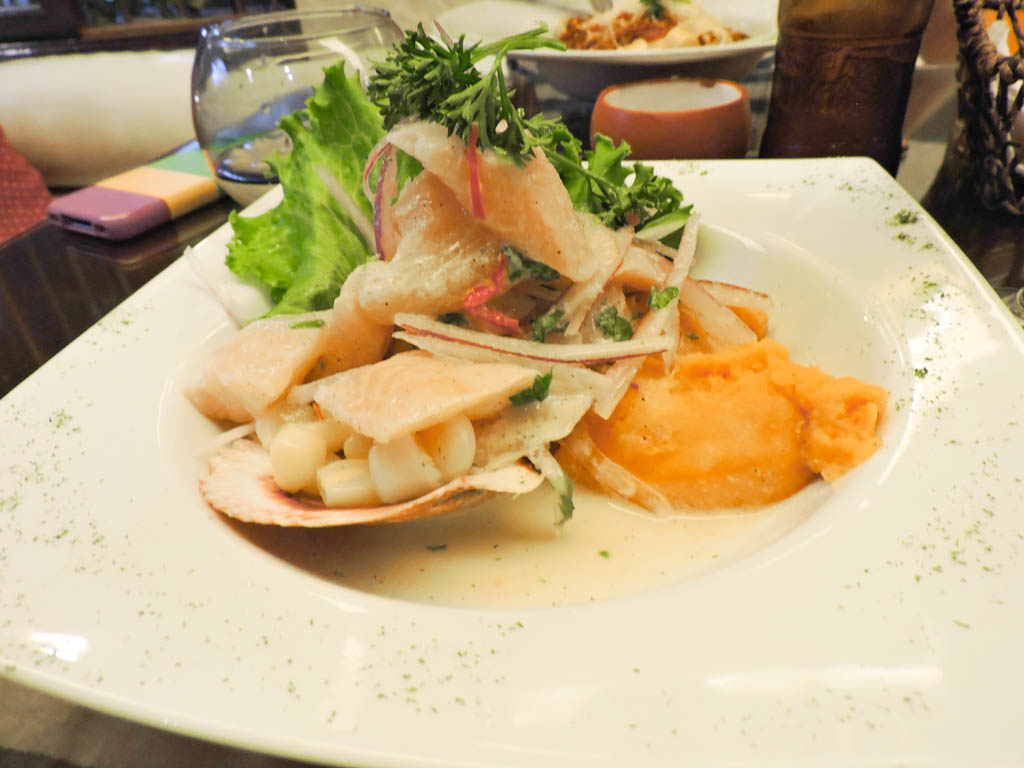
Peruvian Snacks
You’ll get most fruit in Peru; they are just bigger and tastier!
New additions include Granadilla, which gives you the sensation you are sucking frog spawn, but it is delicious and refreshing.
Corn is very popular, you’ll find lots of vendors selling popcorn.

Peruvian Drink
Before I get onto the hard stuff let’s talk about drinking water.
It is not advisable to drink tap water in Peru.
We travelled with a purifying and filtering water bottle and managed to avoid Dehli belly for the full month so I suggest you do it!
- Pisco Sour! The Peruvian sweetheart! Pisco is the national drink; add lemon juice, raw egg, and sugar, then tadah – a Pisco Sour. Fuerty (strong).
- Cerveza (beer) is very popular and cheap. Pilsen, Cristal, and Arequipeña are a few labels to look out for. Each region has local beers for cheap.
- Chicha! The locally brewed corn drink, not for gringo consumption our tour guide warned us. Still up for it? Look out for the red flag outside people’s houses or shops, this indicates it is on sale
- Coca-tea helps with altitude. You’ll drink heaps of this in either leave form (add sugar) or teabag. Locals chew on it for energy.
- Muna is delicious. Drink with hot water, like tea, to help with digestion.
Please take our point about travel insurance seriously!
We met a guy who was sick and when his friend finally dragged him out of the dorm bed to see the doctor it turned out he had dehydration.
Look after yourself and get travel insurance, here is the link to the company we use.

Final Words
It’s easy to see how 2 weeks in Peru can be extended or merged into a quick trip by picking what you feel would be the highlights from above.
I hope that you find this Peru 2-4 week itinerary useful.
Share your Peru itinerary below.
Over to you – any other suggestions/questions?
Pin to your Peru inspiration Pinterest board
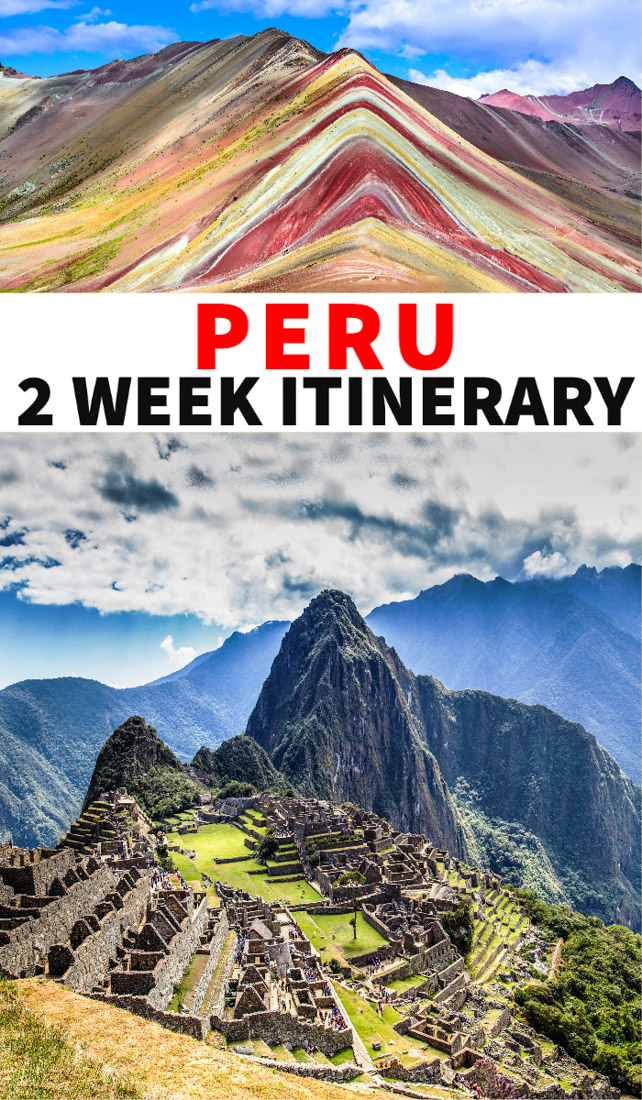

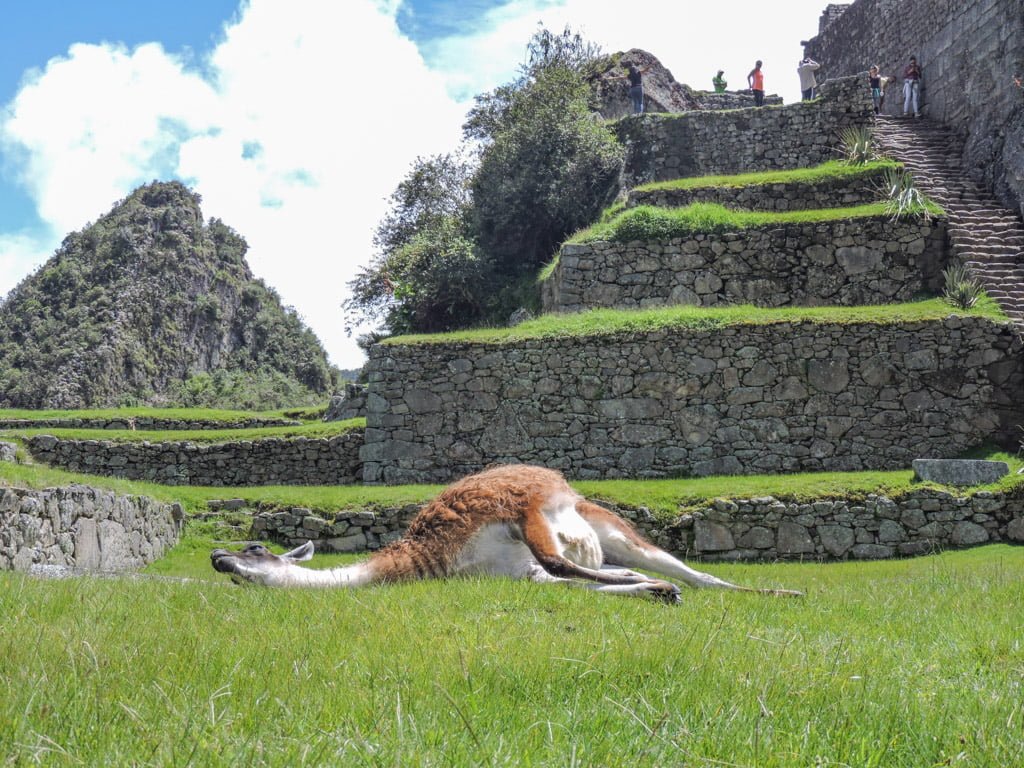
These photos are so inviting – I’ve just added more reasons to make a visit to Peru in the near future, thanks to your blog post. I’d love to ski down Huacachina 😉 Sadly, Peru is so far from Asia I always end up postponing.
That is true Mar, but you never know what 2016 will bring! Some skis and sand?!
Are those penguins I saw? Peru has penguins? WOW! I had no clue. Great detail, as usual 🙂
I know, my heart melted too. We nearly skipped Paracas too – so glad Peru Hop encouraged us to take that part of the trip.
I love the way you’ve set this up with the recommended nights in each place and the lovely photos. It’s a very extensive and very informative post. I almost would break it into a part 1 and a part 2 and do the food the as the part 2. You have so much good information! Have you heard by chance of any educational summer trips for teens that are being offered to Peru?
Thank you! I haven’t, what kind of thing would you be looking for? Like Spanish school? I’d suggest reaching out to San Blas Spanish School who we did our classes with, very enjoyable experience!
Excellent post! I’ve spent at least a couple of weeks in Peru, and have never even heard of Arequipa! I did however, really enjoy my time in Lima, Amazonia, and the San Martin region. It’s truly a great country for those looking for cultural immersion.
It really is such a pleasing country for every type of traveller! I still need to get the rainforest!
This is such a great post! It’s so detailed… I’m hoping to go to Peru next year so I’m bookmarking this!
Kirsty, great choice! It was the first of three South Am countries we visited and it was a very smooth introduction.